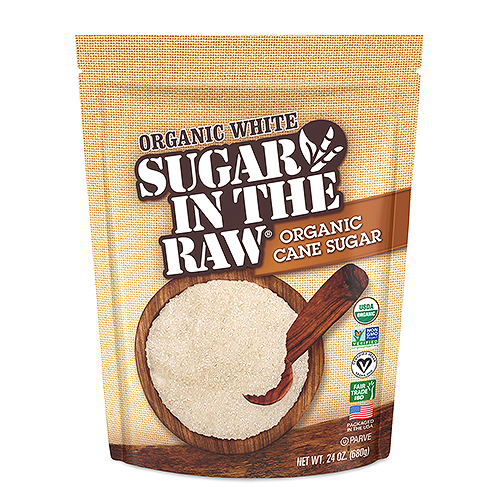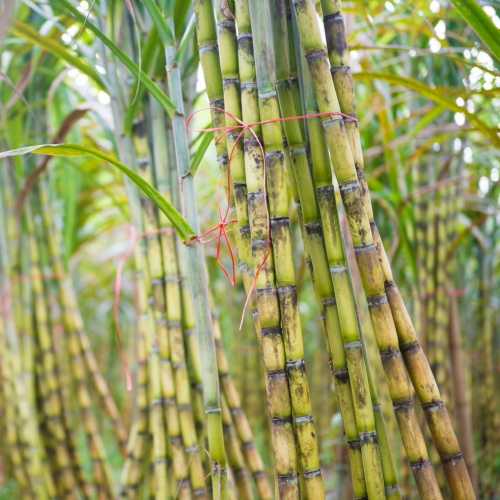Discovering the Comprehensive Steps Associated With Walking Cane Sugar Handling From Gathering to Refinement
The procedure of cane sugar manufacturing encompasses a series of complex steps, starting with the careful harvesting of sugarcane and finishing in the refinement phases that make certain the final item fulfills industry criteria. Each phase, from the removal of juice to the filtration and condensation processes, plays a vital role in establishing the high quality and personality of the sugar. Comprehending these phases not just highlights the complexity of sugar manufacturing yet additionally raises critical concerns concerning effectiveness, sustainability, and innovation in the market. What effects do these elements have for future methods?
Collecting Sugarcane
Gathering sugarcane is a critical step in the cane sugar processing chain, as it directly influences the quality and yield of the last product. Appropriate timing and methods are vital throughout this stage to make sure optimum sugar web content and decrease losses. Typically, sugarcane is harvested when it gets to maturation, normally 12 to 18 months after planting, defined by a high sucrose concentration.

Post-harvest, the sugarcane should be processed quickly to stop sucrose destruction. Ideally, collected walking stick ought to be carried to refining centers within 24 hours to protect sugar quality. Consequently, effective logistical preparation is critical to keep the integrity of the harvested plant throughout the supply chain.
Extraction Process

The crushed walking cane is subjected to a collection of pressing procedures to optimize juice recuperation. Normally, warm water is splashed onto the smashed cane, producing a countercurrent circulation that aids dissolve the sugar while also assisting in the extraction process. The juice gathered from this procedure contains not only sugar yet also different natural substances and contaminations.

To improve extraction effectiveness, some facilities may utilize diffusion methods, where the sugarcane is taken in warm water, permitting the soluble sugars to diffuse into the liquid. The resulting juice, rich in sucrose, is after that guided to succeeding handling stages, laying the structure for filtration and improvement. The removal procedure is hence critical in determining the quality and yield of the final sugar item.
Filtration Techniques
The purification methods employed in walking cane sugar handling are essential for changing the raw juice right into a top quality sugar item. These methods largely intend to remove impurities, such as soil, plant products, and inorganic compounds, which can detrimentally affect the final item's taste and shade.
This procedure includes including lime and heat to the raw juice, which helps with the coagulation of contaminations. Furthermore, the usage of phosphoric acid can boost the information process by more binding contaminations.
Another considerable method is carbonatation, where co2 is presented to the clarified juice. This reaction generates calcium carbonate, which captures staying contaminations and advertises their removal.
Additionally, turned on carbon treatment may be applied to adsorb any continuing to be colorants and organic impurities, making certain a more polished item. The mix of these techniques properly prepares the sugar juice for succeeding actions in the refining procedure, establishing the phase for the manufacturing of high-quality walking stick sugar.
Condensation Approaches
After the purification stage, the following important step in cane sugar handling involves crystallization methods, which play a pivotal duty in transforming the made clear juice right into strong sugar. This procedure commonly uses 2 main approaches: spontaneous crystallization and controlled crystallization.
In spontaneous crystallization, supersaturated sugar remedies are enabled to cool down normally, leading to the formation of sugar crystals over time. This technique enables for the uniform growth of sugar crystals and greater purity.
During condensation, the clarified juice is concentrated via evaporation, boosting its sugar material up until it gets to supersaturation. Once this point is attained, either method can promote the formation procedure. Cane my website Sugar Processing. The resultant sugar crystals are after that separated from the staying syrup via centrifugation
Eventually, the selection of crystallization method influences the top quality, dimension, and purity of the last sugar product, making this step essential in the overall walking stick sugar handling procedure.
Improvement and Product Packaging
How can the pureness and top quality of walking cane sugar be even more boosted after condensation? The refinement procedure plays a vital duty in attaining high-quality cane sugar. Following crystallization, sugar goes through an extensive washing to eliminate pollutants and residual molasses. This is typically completed utilizing cozy water or heavy steam, which assists dissolve and extract undesirable components while protecting the sugar crystals.
Next, the sugar undergoes a process called centrifugation, where it is spun at broadband to divide the purified sugar crystals from the remaining liquid. After centrifugation, the sugar is frequently this contact form more improved via an approach called carbonization or phosphatation, which makes use of activated carbon or phosphoric acid to eliminate shade and off-flavors.
Once improved, the sugar is dried out to achieve the wanted moisture material, ensuring that it remains secure throughout storage space and transportation. The last action includes packaging the polished sugar in moisture-proof and closed containers to keep its high quality and protect against contamination. Cane Sugar Processing. Correct packaging not just extends rack life however likewise promotes simple handling and distribution, guaranteeing that customers receive sugar that fulfills the highest possible standards of pureness and quality
Conclusion
The detailed steps associated with walking stick sugar processing, from the meticulous harvesting of sugarcane to the complex refinement and packaging stages, emphasize the value of each stage in making sure premium sugar manufacturing. Optimal harvesting methods, reliable extraction approaches, and rigorous purification procedures jointly contribute to the end product's purity and stability. The formation browse around this web-site and subsequent packaging practices better boost the honesty and shelf life of the sugar, highlighting the intricacy and accuracy intrinsic in this vital farming sector.
The process of walking cane sugar manufacturing encompasses a series of detailed steps, beginning with the mindful harvesting of sugarcane and culminating in the refinement phases that make sure the final product meets market criteria. Preferably, harvested walking stick must be moved to refining facilities within 24 hours to protect sugar top quality.In spontaneous condensation, supersaturated sugar remedies are enabled to cool down normally, leading to the development of sugar crystals over time - Cane Sugar Processing. The refinement process plays a critical duty in attaining high-quality cane sugar.The extensive steps entailed in walking cane sugar processing, from the meticulous harvesting of sugarcane to the detailed refinement and product packaging phases, highlight the significance of each phase in ensuring premium sugar production
Comments on “The Journey of Cane Sugar Processing: From Harvest to Crystals”